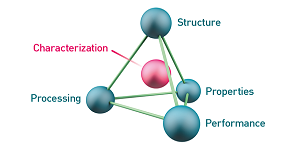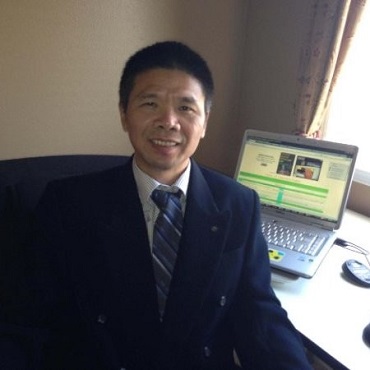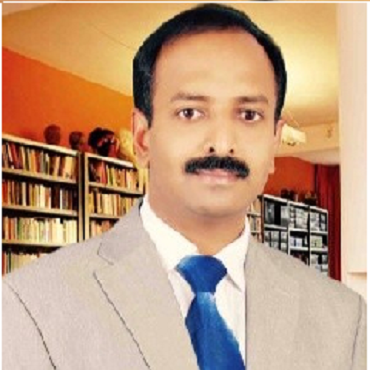
Material Chemistry Congress 2019

Theme: Sustainable new materials and recycling technology
Material Chemistry Conferences welcome chemical professionals, researchers, professors, scientific communities, delegates, students, business professionals and executives from all over the world to attend the 8th World Congress on Material Chemistry and Nanomaterial during September 23-24, 2019 in Paris, France with the theme “Sustainable new materials and recycling technology”. Material Chemistry 2019 aims in proclaim knowledge and share new ideas amongst the professionals, industrialists, and students from research areas of Materials Science, Nanotechnology, Chemistry and Physics to share their research experiences and indulge in interactive discussions and technical sessions at the event.
The Conference will also have a space for companies and institutions to present their services, products, innovations and research results.
As the demand for sustainable materials is increasing in all streams of technology with non-renewable materials depleting, the innovations in Material chemistry plays a crucial role in day to day life. In 2050, there will be nearly 9.8 billion human beings on the planet. With this exponential growth, it has bad effects on herbal resources, with the demand of population it is necessary for the improvement of new materials. Material Chemistry is the fast-growing field in both research and industrial sectors. Materials Chemistry Conference gives the basic ideas related to the innovation of new materials and technologies for sustainability. The field of Materials Chemistry involves a wide range of sectors of markets growing respectively like Engineering Resins, Polymer Alloys and blends, advanced batteries and fuel cells and so on.
Come to be a part of Exploring of New Materials!!
- Material Chemistry and Science Association and Societies
- Material Chemistry and Science Researchers
- Material Chemistry Students, Scientists
- Directors of Material companies, Chemical companies
- Material Chemistry Engineers
- Material Science Students
- Chemists
- Material suppliers
- Consulting companies
- Exhibitors
- Industry Investors
- Market and Business Analysts
- Mechanical Associations and Societies
- Mechanical/ Chemical Students
- Other
Materials Chemistry 2019, offers a great opportunity to meet people in the field of Material Chemistry. It enables to know the recent trends in the Material Chemistry by professed scientists globally. It allows the company representatives to exhibit their products and to have meetings with the scientists in order to increase their business opportunities.
Paris is the capital of France and is a major European city and a global center for art, fashion, gastronomy and culture. Its 19th-century cityscape is crisscrossed by wide boulevards and the River Seine. Beyond such landmarks as the Eiffel Tower and the 12th-century, Gothic Notre-Dame cathedral, the city is known for its cafe culture and designer boutiques
Paris has been one of Europe's major centres of finance, commerce, fashion, science, and the arts.
Paris is often referred to as The City of Light, both because of its leading role during the Age of Enlightenment, and more literally because Paris was one of the first large European cities to use gas street lighting on a grand scale on its boulevards and monuments
One of the most well know land marks in the world. Built by Gustave Eiffel in 1889 for the World Expo, the construction was completed after 2 years, 2 months and 5 days. Reaching a height of 324 meters, built of iron and more than 7,000 tonnes in weight.
Session 1: Analytical Techniques and Instrumentation
Various techniques related to the synthesis of materials to form useful chemical substances constitute the field of analytical study. Instrumental analysis mainly helps us to know the assessment of purity, their chemical composition, structure and function. Analysis of chemical compounds was done to produce results for “what chemicals are present, what are their characteristics and in what quantities are they present?” Basic methods rely on important factors like sample preparation, accuracy, precision and cleanliness. Calibration curves help in the calculation of proper quantities of sample used and also detect the synthesized novel compounds. Certain equipment like electron microscopes, spectrometers, diffractive instruments and so on was employed in the analytical process of a particular synthesis. Scanning Electron Microscope (SEM) helps in microstructural analysis, fault diagnosis, imaging and elemental analysis of solid materials. Microscopes mostly deal with the same kind of characteristics during the process of synthesis. Mass spectrometer will be majorly availed to detect the masses of individual species within a sample. X-ray diffraction (XRD) deals with the mineralogical analysis of solid materials for phase determination. Rutherford Back Scattering (RBS) is the major instrument used in the analysis related to the field of materials science and chemistry.
MetallurgyConference | Material Chemistry Conference | Polymer Science Conference | Non-CrystallineMaterials Conference | Paris Conference | AnalyticalTechniqueand Instrumentation | Nanomaterials and Nanotechnology | Characterization and Testing of Materials | Materials Science and Engineering | Ceramics and Magnetic Materials | Science and Technology of Advanced Materials | Applied Materials Chemistry | Polymer Science and Engineering |Material Science in Construction Engineering|Ceramics and Composite Materials | Powder Metallurgy | Materials Research Conference| Materials Engineering Conference
Session 2: Nanomaterials and Nanotechnology
Nanomaterials describe, in principle, materials of which a single unit is sized (in at least one dimension) between 1 to 1000 nanometres (10-9 meter) but usually is 1 to 100 nm (the usual definition of nanoscale. Nanomaterials research takes a materials science-based approach to nanotechnology, leveraging advances in materials metrology and synthesis which have been developed in support of microfabrication research. Materials with structure at the nanoscale often have unique optical, electronic, or mechanical properties. Nanomaterials are slowly becoming commercialized and beginning to emerge as commodities.
Nanotechnology is the treatment of issue on a nuclear, atomic, and supramolecular scale. The intriguing angle about nanotechnology is that the properties of numerous materials modify when the size of their measurements approaches nanometers. The field of materials science covers the disclosure, portrayal, properties, and utilization of nanoscale materials. Materials with structure at the nanoscale level o have one of a kind optical, electronic, or mechanical properties. Albeit a lot of nanotechnology's potential still remains un-used, interest in the field is blasting. The U.S. government appropriated in excess of a billion dollars to nanotechnology look into in 2005 to discover new advancements in nanotechnology. China, Japan and the European Union have spent comparative sums. The expectations are simply the same on all fronts: to propel oneself off a surface on a developing worldwide market that the National Science Foundation evaluations will be justified regardless of a trillion dollars. The worldwide market for actuated carbon totalled $1.9 billion, in 2013, driven fundamentally by Asia-Pacific and North American locale for applications in water treatment and air sanitization.
MetallurgyConference | Material Chemistry Conference | Polymer Science Conference | Non-CrystallineMaterials Conference | Paris Conference | AnalyticalTechniqueand Instrumentation | Nanomaterials and Nanotechnology | Characterization and Testing of Materials | Materials Science and Engineering | Ceramics and Magnetic Materials | Science and Technology of Advanced Materials | Applied Materials Chemistry | Polymer Science and Engineering |Material Science in Construction Engineering|Ceramics and Composite Materials | Powder Metallurgy | Materials Research Conference| Materials Engineering Conference
Session 3: Characterization and Testing of Materials
Characterization, when used in materials science, refers to the broad and general process by which a material's structure and properties are probed and measured. It is a fundamental process in the field of materials science, without which no scientific understanding of engineering materials could be ascertained. An important aspect of materials science is the characterization of the materials that we use or study in order to learn more about them. Today, there is a vast array of scientific techniques available to the materials scientist that enables this characterization.
It is a major procedure in the field of materials science, without which no logical comprehension of designing materials could be as curtained. Spectroscopy alludes to the estimation of radiation force as a component of wavelength. Microscopy is the specialized field of utilizing magnifying lens to see protests that can't be seen with the stripped eye. Portrayal and testing of material is critical before the use of materials. Appropriate testing of material can make the material more adaptable and strong. Research demonstrates the worldwide material testing gear advertise produced incomes of $510.8 million out of 2011, developing at a negligible rate of 3.1% over the earlier year. The market is commanded by the 'enormous three' Tier 1 contenders, to be specific MTS Systems Corporation, Instron Corporation, and Zwick/Roell, while different members have performed better provincially, for example, Tinus Olsen in North America and Shimadzu Corporation in Asia Pacific.
MetallurgyConference | Material Chemistry Conference | Polymer Science Conference | Non-CrystallineMaterials Conference | Paris Conference | AnalyticalTechniqueand Instrumentation | Nanomaterials and Nanotechnology | Characterization and Testing of Materials | Materials Science and Engineering | Ceramics and Magnetic Materials | Science and Technology of Advanced Materials | Applied Materials Chemistry | Polymer Science and Engineering |Material Science in Construction Engineering|Ceramics and Composite Materials | Powder Metallurgy | Materials Research Conference| Materials Engineering Conference
Session 4: Materials Science and Engineering
Materials science is a syncretic discipline hybridizing metallurgy, ceramics, solid-state physics, and chemistry. The interdisciplinary field of materials science, also commonly termed materials science and engineering is the design and discovery of new materials, particularly solids. It includes chemistry, physics, and engineering to understand ancient, phenomenological observations in metallurgy and mineralogy.
Materials Science is an emerging and challenging field to study and acquire the knowledge of materials which are composite to be understood. Materials science has provoked and contributed to the emergence of various nanomaterials, biomaterials, electronic, optical, magnetic materials, piezoelectric materials, ceramics, glasses, polymers, metal alloys, smart materials, semiconductor materials and design of complicated structures through the innovation of technology by the advancements in the study of materials science.
The research in the field of materials science has an exponential growth throughout the globe and on materials science by providing platforms where the latest trends in such researches are accelerated by gathering world renowned scientists under one roof.
MetallurgyConference | Material Chemistry Conference | Polymer Science Conference | Non-CrystallineMaterials Conference | Paris Conference | AnalyticalTechniqueand Instrumentation | Nanomaterials and Nanotechnology | Characterization and Testing of Materials | Materials Science and Engineering | Ceramics and Magnetic Materials | Science and Technology of Advanced Materials | Applied Materials Chemistry | Polymer Science and Engineering |Material Science in Construction Engineering|Ceramics and Composite Materials | Powder Metallurgy | Materials Research Conference| Materials Engineering Conference
Session 5: Ceramics and Magnetic Materials
Ceramic engineering is the science and technology of creating objects from inorganic, non-metallic materials. The term includes the purification of raw materials, the study and production of the chemical compounds concerned, their formation into components and the study of their structure, composition and properties. The word Ceramics covers inorganic, nonmetallic, solid materials that have been hardened by baking at a high temperature. The most important of these were the traditional clays, made into pottery, dinnerware, bricks, and tiles. Ceramics have high hardness, high compressive strength, and chemical inertness. All ceramics can be assigned to one of three basic categories, depending on what type of clay is used and the temperature at which it is fired: earthenware, stoneware, and porcelain. The bonding in ceramics are very strong either ionic or network covalent. Many adopt crystalline structures, but some form glasses. The properties of the materials are a result of the bonding and structure.
MetallurgyConference | Material Chemistry Conference | Polymer Science Conference | Non-CrystallineMaterials Conference | Paris Conference | AnalyticalTechniqueand Instrumentation | Nanomaterials and Nanotechnology | Characterization and Testing of Materials | Materials Science and Engineering | Ceramics and Magnetic Materials | Science and Technology of Advanced Materials | Applied Materials Chemistry | Polymer Science and Engineering |Material Science in Construction Engineering|Ceramics and Composite Materials | Powder Metallurgy | Materials Research Conference| Materials Engineering Conference
Session 6: Science and Technology of Advanced Materials
Two-dimensional (2D) materials have attracted much attention in the past decade. They have high specific surface area and also electronic engineering and properties that differ from their bulk counterparts due to the low dimensionality. Graphene is the best known and the most studied 2D material, but metal oxides and hydroxides (including clays), dichalcogenides, boron nitride (BN), and other materials that are one or several atoms thick are receiving increasing attention. They exhibit a combination of properties that cannot be provided by other materials. Many two-dimensional materials are synthesized by selective extraction process which is critically important when the bonds between the building blocks of the material are too strong (e.g., in carbides) to be broken mechanically in order to form Nano structures. These have a thickness of a few nanometres or less. Electrons are free to move in the two-dimensional plane, but their restricted motion in the third direction is governed by quantum mechanics. Magnetic topological insulator comprised of two-dimensional (2-D) materials has a potential of providing many interests and applications by manipulating the surfaces states like yielding quantum anomalous Hall effect giving rise to dissipation-less chiral edge current, giving axion electromagnetism and others. The chemistry of electrical, optical, thermal and mechanical properties varies in a peculiar style and these materials are applied widely in case of ambipolar electronics, transistors and so on.
MetallurgyConference | Material Chemistry Conference | Polymer Science Conference | Non-CrystallineMaterials Conference | Paris Conference | AnalyticalTechniqueand Instrumentation | Nanomaterials and Nanotechnology | Characterization and Testing of Materials | Materials Science and Engineering | Ceramics and Magnetic Materials | Science and Technology of Advanced Materials | Applied Materials Chemistry | Polymer Science and Engineering |Material Science in Construction Engineering|Ceramics and Composite Materials | Powder Metallurgy | Materials Research Conference| Materials Engineering Conference
Session 7: Applied Materials Chemistry
The effects of ultrasound induce certain physical changes like the dispersal of fillers and other components into base polymers (as in the formulation of paints), the encapsulation of inorganic supplements with polymers, changing of particle size in polymer powders, and most important is the welding and cutting of thermoplastics. In contrast, chemical changes can also be created during ultrasonic irradiation as a result of cavitation, and these effects have been used to favour many areas of polymer chemistry. In materials science, the sol-gel conversion is a method for producing solid materials from small molecules. This method is used for the fabrication of metal oxides particularly the oxides of silicon and titanium. The process involves conversion of monomers into a colloidal solution (sol) that acts as the precursor for an integrated network (or gel) of either discrete particles or network polymers. Important precursors are metal alkoxides. Polymers produced under sonication had narrower poly dispersities but higher molecular weights than those produced under normal conditions. The fastness of the polymerization was caused by more efficient dispersion of the catalyst throughout the monomer, leading to a more homogeneous reaction and hence a lower distribution of chain lengths. The electrical and magnetic phenomena alter the properties of materials for better prospective in manufacturing. Plastic fabrication is the design, manufacture and assembly of plastic products through one of a number of methods.
MetallurgyConference | Material Chemistry Conference | Polymer Science Conference | Non-CrystallineMaterials Conference | Paris Conference | AnalyticalTechniqueand Instrumentation | Nanomaterials and Nanotechnology | Characterization and Testing of Materials | Materials Science and Engineering | Ceramics and Magnetic Materials | Science and Technology of Advanced Materials | Applied Materials Chemistry | Polymer Science and Engineering |Material Science in Construction Engineering|Ceramics and Composite Materials | Powder Metallurgy | Materials Research Conference| Materials Engineering Conference
Session 8: Polymer Science and Engineering
Polymer science or macromolecular science is a subfield of materials science concerned with polymers, primarily synthetic polymers such as plastics and elastomers. The field of polymer science includes researchers in multiple disciplines including chemistry, physics, and engineering. The foremost challenges in the upcoming decades will be the increase in population, the concentration of people in expansive urban centers, and globalization, and the expected change of climate. Hence, the main concerns for humans in the future will be energy & resources, food, health, mobility & infrastructure and communication. There is no doubt that polymers will play a key role in finding successful ways in handling these challenges. Polymers will be the material of the new millennium and the production of polymeric parts i.e. green, sustainable, energy-efficient, high quality, low-priced, etc. will assure the accessibility of the finest solutions round the globe.
- 3D printing
- Polymeric solar cell
- Self-healing and reprocessable polymer system
- Smart/responsive polymers
- Functional polymeric materials
- Recent advances in shape memory polymer
MetallurgyConference | Material Chemistry Conference | Polymer Science Conference | Non-CrystallineMaterials Conference | Paris Conference | AnalyticalTechniqueand Instrumentation | Nanomaterials and Nanotechnology | Characterization and Testing of Materials | Materials Science and Engineering | Ceramics and Magnetic Materials | Science and Technology of Advanced Materials | Applied Materials Chemistry | Polymer Science and Engineering |Material Science in Construction Engineering|Ceramics and Composite Materials | Powder Metallurgy | Materials Research Conference| Materials Engineering Conference
Session 9: Material Science in Construction Engineering
Amid the previous decade, the necessities of the country and the world have required structural architects to likewise concentrate on the reuse of important materials and assets, which thusly has made energizing difficulties in seeing how to artificially and mechanically balance out these materials for reuse. Current difficulties require the use of micromechanics, thermodynamics, energy, and a valuation of developing procedures to tackle issues. Structural specialists have adjusted and connected multidisciplinary standards to take care of issues and have utilized comparative ways to deal with those utilized as a part of strong rocket fuels, cement, metals, and earthenware production. One of the greatest gifts for the building materials division is the apparently perpetual raising of the bar by different national arranging offices on "green" building. Agreeing a give an account of Forbes.com, which refers to an examination report from Navigant Research, the overall market for green development materials will develop from USD 116 billion out of 2013 to an abundance of US$254 billion by 2020. Europe, with its accentuation on diminishing emanations, will presumably be the biggest territorial market, representing around half of the worldwide interest for items by 2020. TechNavio delivered a report, "Worldwide green building material market 2012-2016," in which it conjecture request development internationally to be around 17.9% compound yearly development rate.
In history there are slants in building materials from being: normal to winding up more man-made and composite; biodegradable to enduring; indigenous (nearby) to being transported comprehensively; repairable to dispensable; and decided for expanded levels of flame wellbeing. These patterns tend to expand the underlying and long-haul monetary, biological, vitality, and social expenses of building materials.
MetallurgyConference | Material Chemistry Conference | Polymer Science Conference | Non-CrystallineMaterials Conference | Paris Conference | AnalyticalTechniqueand Instrumentation | Nanomaterials and Nanotechnology | Characterization and Testing of Materials | Materials Science and Engineering | Ceramics and Magnetic Materials | Science and Technology of Advanced Materials | Applied Materials Chemistry | Polymer Science and Engineering |Material Science in Construction Engineering|Ceramics and Composite Materials | Powder Metallurgy | Materials Research Conference| Materials Engineering Conference
Session 10: Ceramics and Composite Materials
The primitive earthenware production made by people were ceramics objects, including 27,000-year-old puppets, produced using mud, either without anyone else or mixed with different materials like silica, solidified, sintered, in flame. Later earthenware production were coated and let go to create smooth, hued surfaces, diminishing porosity using shiny, nebulous fired coatings over the crystalline fired substrates. Pottery at present incorporate residential, mechanical and building items, and in addition a wide scope of artistic workmanship. In the twentieth century, new artistic materials were created for use in cutting edge clay designing, for example, in semiconductors. Polymers are examined in the fields of biophysics and macromolecular science, and polymer science (which incorporate polymer science and polymer material science). Truly, items emerging from the linkage of rehashing units by covalent concoction bonds have been the essential focal point of polymer science; rising critical territories of the science at present spotlight on non-covalent connections. Composite materials are all around used for structures, expansions and structures like watercraft outlines, swimming pool sheets, race auto bodies, shower backs off, showers, storing tanks, pantomime shake and refined marble sinks and edges. The most progressive cases perform routinely on shuttle in requesting conditions. Presently remaining at USD 296.2 billion, the earthenware production showcase is gauge to develop to USD 502.8 billion by 2020, as each industry accomplishes updated fabricating effectiveness alongside high sustainable power source proficiency.
MetallurgyConference | Material Chemistry Conference | Polymer Science Conference | Non-CrystallineMaterials Conference | Paris Conference | AnalyticalTechniqueand Instrumentation | Nanomaterials and Nanotechnology | Characterization and Testing of Materials | Materials Science and Engineering | Ceramics and Magnetic Materials | Science and Technology of Advanced Materials | Applied Materials Chemistry | Polymer Science and Engineering |Material Science in Construction Engineering|Ceramics and Composite Materials | Powder Metallurgy | Materials Research Conference| Materials Engineering Conference
Material Chemistry (MC) might be a field of innovation that envelops the range of materials assortments and the best approach to utilize them in creating. Materials length the range: metals, pottery, polymers (plastics), semiconductors, and blends of materials known as composites. We tend to rest in a world that is every reliant upon and confined by materials. All that we tend to see and utilize is made of materials: autos, planes, PCs, iceboxes, microwaves, TVs, dishes, flatware, athletic instrumentation of different kinds, and even solution gadgets like substitution joints and appendages. Those need materials particularly custom-made for his or her application. Particular properties zone unit required that outcome from meticulously picking the materials and from predominant the creating forms want to change over the fundamental materials into a definitive outlined item. Energizing new item advancements oft zone unit feasible exclusively through new materials as well as process. New materials advances created through designing and science can at present form amazing changes in our lives inside the twenty first century, and people in Material Chemistry can in any case be enter in these progressions and advances.
These specialists disturb the science and innovation of assembling materials that have properties and shapes fitting for sensible utilize. Exercises of those specialists fluctuate from essential materials creation.Through the arranging and improvement of late materials to the dependable and prudent delivering for a definitive item. Such exercises region unit discovered more often than not in businesses like part, transportation, normal logic, vitality change, and restorative forte frameworks. The long run can bring consistently expanding difficulties and open doors for fresh out of the plastic new materials and higher process. Materials zone unit advancing snappier nowadays than whenever ever. New partner degreed enhanced materials zone unit a "supporting innovation" - one which may invigorate advancement and stock change. Prime quality item result from enhanced process and a great deal of pressure will be put on recovering and utilize. For these few reasons, most reviews name the materials field by and large of the vocations with awesome future chances.
We live in a world that is both dependent upon and limited by materials. Materials Chemistry Conference is the best platform to discuss the basic principles involved in the development of Materials Science and Engineering. As this Materials Chemistry 2019 deals with the basics concepts, students, delegates, academicians and business people can attend the conference to root up the knowledge and excel in this field. It encompasses the spectrum of materials types and how to use them in manufacturing. Materials span the range: metals, ceramics, polymers (plastics), semiconductors, and combinations of materials called composites. The future will bring ever-increasing challenges and opportunities for new materials and better processing. Materials are evolving faster today than at any time in history.
Scope and Importance:-
Materials Chemistry is a broad, diverse and multidisciplinary field. It is continuous interaction with basic disciplines and is also contributing to meet all Grand Societal Challenges. This contribution is such that numerous reports have been produced in recent years in Europe and world - wide, with the aim of drawing a comprehensive picture and proposing coordinated actions towards the establishment of coherent strategies in the field. The present report subscribes to this perspective, with a particular goal which is to contribute to the establishment of a comprehensive view of the role in efficient development of key enabling technologies.
Branches of Materials Chemistry Include:
- Thermodynamics of materials
- Fundamentals of Materials Science
- Polymer Science and Engineering
- Amorphous Materials
- Materials in Human Experience
- Mechanics of Materials
- Magnetic Materials
- Molecular Principles of Biomaterials
Top Universities in Paris:
- Universite Paris Saclay (ComUE)
- PSL Research University Paris (ComUE)
- Universite de Lyon (ComUE)
- Languedoc-Roussillon Universites (ComUE)
- University of Lorraine
Societies Associated with Material Chemistry:-
- Society of Materials Science
- Federation of Materials Societies
- International union of Crystallography
- International Organisation of Materials
- Metals and Minerals Societies
- Japan Society for Composite Materials
- Materials Research Society
- Society for Biomaterials
- Society for Advancement of Material and process Engineering
- Society for materials Science
- American Ceramic Society
- American Composites Manufacturers Association
- Australasian Ceramic Society
- Australasian Society for Biomaterials and Tissue Engineering
- Brazilian Composites Materials Association
- Canadian Biomaterials Society
- Federation of European Materials Societies
- International Organization of Materials
- International Union of Crystallography
- International Organization of Materials
- Metals and Minerals Societies
Market Value on Materials Research:
Rise in demand from the end user industries drives the composites market. Improved properties such as high fatigue life, high strength and modulus, reduced weight, acoustic insulation, and corrosion resistance have led to an increase in the demand. Volatility in the raw material prices and non-recyclable nature of composites pose a great threat in the growth of the market.
The report segments the composites market on the basis of fiber type, resin type, manufacturing process, and application. On the basis of fiber, the market is divided into carbon fiber composites, glass fiber composites, and others. Based on the resin type, market is classified into thermosetting composites and thermoplastic composites. On the basis of type of manufacturing process, the market is categorized into layup, filament, injection molding, pultrusion, compression molding, RTM, and others. On the basis of application, the market is divided into transportation, aerospace & defense, electrical & electronics, construction, wind energy, pipes and tanks, marines, and others. Geographic breakdown and deep analysis of each of the aforesaid segments is included for North America, Europe, Asia-Pacific, and LAMEA. Growth of the electrical & electronics, construction & infrastructure, and improved transportation facilities has led Asia-Pacific to be the largest market of composites.
Comprehensive competitive analysis and profiles of major market players such as Hexcel Corporation, Huntsman Corporation, Toray Industries, Teijin Limited, and Owens Corning are also provided in this report. The target end users for these companies can be categorized as automotive, aerospace, construction, and wind energy related companies such as BMW, Ford, Bell Helicopter, Boeing, Mercedes-Benz, and Vestas.
Benefits for stake holders on Materials:
- This report entails the detailed quantitative analysis of the current market and estimations through 2014-2022, which assists to identify the prevailing opportunities.
- Exhaustive analysis of the global composites market by type helps understand the types of composites that are currently being used along with the variants that would gain prominence in the future.
- An in-depth analysis of the current research and clinical developments within the composites market is provided with key dynamic factors that predict the behaviour of the market.
- Extensive analysis is conducted by following key product positioning and monitoring the top competitors within the market framework. Key market players within the composites market are profiled in this report and their strategies are analysed thoroughly, which interprets the competitive outlook of the global composites market. This report provides an extensive analysis of the current and emerging trends and dynamics in the global composites market. In-depth analysis has been done in this report by constructing market estimations for the key market segments between 2014 and 2022.
Market Growth of Materials Chemistry in the last and upcoming ten years
The global material market was valued at $149 million in 2015, and is expected to reach $1,387 million by 2022, growing at a CAGR of 39.7% during the forecast period. Material mediums are defined as macroscopic composites possessing a man-made, three-dimensional, periodic cellular architecture designed to produce an optimized combination, not available in nature, of two or more responses to a specific excitation. They show exceptional physical properties such as negative permeability and permittivity. The significance of materials is that they allow engineers to manipulate wave propagation by arranging the unit cells in different ways. For example, though copper is a good conductor and appears bronze in colour, a materials designed out of copper can be engineered to be an insulator and reflect yellow. Major factors that drive the market growth are capital investment from public and private sources and highly skilled researchers for product commercialization. In addition, the unique engineered properties of material mediums are not found in nature, making them inherently valuable. However, inefficient research despite huge investment is expected to restrain the market growth.
Funds allotted to Materials Chemistry:
- MSE faculty are leading numerous research projects, which are supported by an average of $4-5 million annually.
- A significant portion of this funding comes from federal grants: U.S. Department of Defense and all branches of the military, U.S. Department of Energy, National Science Foundation, and Center for Disease Control & Prevention. Another part comes from State or private foundations.
- Finally, industry (from small start-up companies to large international corporations) provides much of the remainder funding, which provide both for graduate research assistantships and support for undergraduates conducting research on a project.
Members Associated with Materials Chemistry:
Research Positions:
- Research Associate
- Research Scientist
- Bitumen Research Associate
Business Operations Jobs:
- Product Manager
- Strategy Director
- Business Development Manager
- Business Operation Analyst
Apart from the industrial personnel where most of the research work is done, other research communities include:
- Academicians include Student community
- Researchers include Post docs, Research Associates
- Scientists include Professors, Associate professors and Assistant professor
- Industries include Presidents, CEO’s and R&D Managers
Major Materials Chemistry Associations around the Globe
- American Chemical Society (ACS)
- American Physical Society (APS)
- The Materials Information Society (ASM International)
- Microscopy Society of America (MSA)
- The Minerals, Metals & Materials Society (TMS)
- Sigma Xi: The Scientific Research Society
- International Society for Optical Engineering (SPIE)
- The American Ceramic Society (ACerS)
- International Association of Advanced Materials(IAAM)
Glance at Materials Chemistry Market:
The global market is projected to reach $6,000 million by 2020 and register a CAGR of 10.2% between 2015 and 2020 in terms of value. The growth in market is estimated to be driven by the increasing demand for aero gel materials from oil & gas and construction applications. The North American region remains the largest market, followed by Asia-Pacific. . The Europe market is estimated to be growth at a steady rate due to economic recovery in the region along with the increasing concern for the building insulation and energy savings. The structural core material market in aerospace interior is estimated to grow from USD 142.2 Million in 2016 to USD 220.2 Million by 2021, at a compound annual growth rate (CAGR) of 9.13% between 2016 and 2021. The base year considered for the study is 2015 and the market size is projected between 2016 and 2021. Increase in the demand for Boeing 787 and Airbus 350 is expected to significantly drive the structural core material market in aerospace interiors. The market size of high-temperature composite materials is projected to reach USD 5.01 Billion by 2021, at a CAGR of 8.41% during the forecast period. The introduction of safety norms in public transport as well as increasing demand for lightweight and high-performance composite materials in the aerospace & defense, transportation, and energy & power applications are key factors responsible for the growth of the high-temperature composite materials market. Global Metallurgy market will develop at a modest 5.4% CAGR from 2014 to 2020. This will result in an increase in the market’s valuation from US$6 bn in 2013 to US$8.7 bn by 2020. The global market for powder metallurgy parts and powder shipments was 4.3 billion pounds (valued at $20.7 billion) in 2011 and grew to nearly 4.5 billion pounds ($20.5 billion) in 2012. This market is expected to reach 5.4 billion pounds (a value of nearly $26.5 billion) by 2018
The global market for carbon fiber reached $1.8 billion in 2014, and further the market is expected to grow at a five-year CAGR (2015 to 2020) of 11.4%, to reach $3.5 billion in 2020. Carbon fiber reinforced plastic market reached $17.3 billion in 2014, and further the market is expected to grow at a five-year CAGR (2015 to 2020) of 12.3%, to reach $34.2 billion in 2020. The competition in the global carbon fiber and carbon fiber reinforced plastic market is intense within a few large players, such as Toray Toho, Mitsubishi, Hexcel, Formosa, SGL carbon, Cytec, Aksa, Hyosung, Sabic, etc.
Summary:
Material Chemistry(MC) is a field of innovation that incorporates the range of materials composes and how to utilize them in assembling. Materials length the range: metals, pottery, polymers (plastics), semiconductors, and blends of materials called composites. We face a daily reality such that is both ward upon and restricted by materials. All that we see and utilize is made of materials: autos, planes, PCs, iceboxes, microwaves, TVs, dishes, flatware, athletic gear of various kinds, and even biomedical gadgets, for example, substitution joints and appendages. These require materials particularly custom fitted for their application. Particular properties are necessitated that outcome from precisely choosing the materials and from controlling the assembling forms used to change over the fundamental of materials into the last built item. We welcome you, for the Organizing Committee, to this magnificent gathering with incredible researchers from various nations around the globe and sharing new and energizing outcomes in Materials World, which will be held in Paris from June 26-27, 2019. This energizing and instructive gathering program including entire addresses, symposia, workshops on an assortment of themes, blurb introductions and different projects for members from everywhere throughout the world. Importance and Scope: Material Chemistry has dependably been with us from the antiquated occasions and has dependably been the foundation of human's advancement and improvement. Materials researchers lay weight on seeing how the historical backdrop of a material impacts its structure, and along these lines its properties and execution. These Components have cleared route for the change of the nature of human life all things considered. Materials Research 2019 gives you the top to bottom examination of material science and new definition to your creative impulses. Materials Research 2019 gives you the base to fabricate your own particular château of information and makes you totally prepared and sets you up for the difficulties in material science Industry. This energizing and educational meeting program including entire addresses, symposia, workshops on an assortment of themes, notice introductions and different projects for members from everywhere throughout the world Importance and Scope.
Material Chemistry has dependably been with us from the antiquated occasions and has dependably been the foundation of human's advancement and improvement. Materials researchers lay weight on seeing how the historical backdrop of a material impacts its structure, and along these lines its properties and execution. These components have cleared route for the change of the nature of human life as it were. Materials Research 2019 gives you the top to bottom investigation of material science and new definition to your creative impulses. Materials Research 2019 gives you the base to fabricate your own château of learning and makes you totally prepared and sets you up for the difficulties in material science Industry. These designers shake the science and innovation of assembling materials that have properties and shapes fitting for sensible utilize. Exercises of those designers fluctuate from essential materials generation, through the arranging and improvement of on-going materials to the solid and temperate creating for a definitive item. Such exercises zone unit discovered more often than not in enterprises like part, transportation, normal reasoning, vitality transformation, and restorative forte frameworks. The long run can bring consistently expanding difficulties and open doors for fresh out of the box new materials and higher process. Materials territory unit is developing snappier nowadays than ever. New partner degreed enhanced materials zone unit a "supporting innovation"- one which may invigorate advancement and stock change. Prime quality item result from enhanced process and a great deal of pressure will be put on recovering and utilize. For these few reasons, most overviews name the materials field by and large of the vocations with magnificent future chances.
- Analytical Techniques and Instrumentation
- Nanomaterials and Nanotechnology
- Characterization and Testing of Materials
- Materials Science and Engineering
- Ceramics and Magnetic Materials
- Science and Technology of Advanced Materials
- Applied Materials Chemistry
- Polymer Science and Engineering
- Material Science in Construction Engineering
- Ceramics and Composite Materials
- Journal of Nanomaterials & Molecular Nanotechnology
- Journal of Polymer Science & Applications
- Research and Reports on Metals
9 Organizing Committee Members
9 Renowned Speakers
Pabitra Kumar Paul
Jadavpur University, India
India
Shirin Alexander
Swansea University
UK
Xinhua Liu
Imperial College London
UK
Vanessa Fierro
Universite de Lorraine, France
France
Myongsoo Lee
Jilin University
China
Chenhui Zhu
Northwest University
China
Elaine Yoshiko Matsubara
University of Sao Paulo
Brazil
Mahmoud Sayed Abd El-sadek
South Valley University
Egypt
Vagif Ibrahimov
Baku State University
Azerbaijan










































































































































